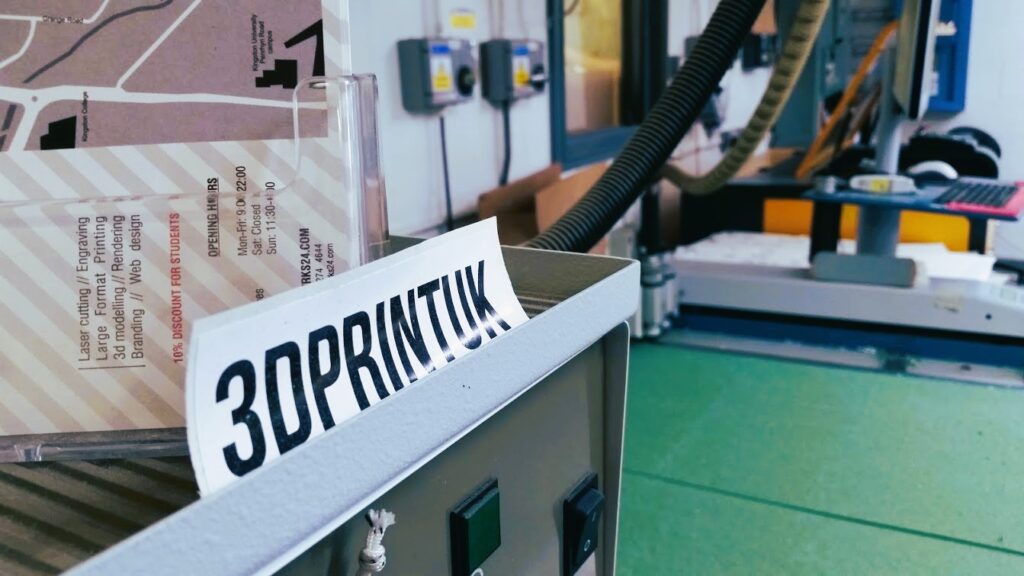Op-Ed: Critical breakthrough in 3D bioprinting by Melbourne University

Advanced printing technology. — Image © Tim Sandle
It is possible to 3D bioprint living tissue, but the current technology is slow. The lengthy process might compromise tissue viability. There are also issues with cell positioning (think about that for half a second) and guidance for printing.
A new methodology developed by Melbourne University has drastically improved speed and performance. This includes some degree of management of cell positioning and organization. This method can be applied to cartilage, tissue, and bone. Associate Professor David Collins of the Collins BioMicrosystems Laboratory at the University of Melbourne explains the core functions of the new printing approach on the link above.
It’s hard to think of a more useful line of research.
I don’t want to garble the technological issues, which are complex enough. I want to stick to the potential of this tech as a profound breakthrough in important medical science and biology in general.
3D tissue printing is the Holy Grail of restorative and regenerative technologies. It’s been a dream for most of human history. It can be used to manage intractable conditions, major tissue loss, and a range of medically grim issues.
What if you could replace a mastectomy with home grown tissue? How about arms, legs, spinal cords and other useful things? They’re not quite there yet, but this is an incredibly crucial major step in getting there.
Yes, there are additional important things like neurology, circulatory, cell “turnover”, and a range of equally daunting issues, but “print on demand” is the key here.
There’s an interesting bit of history here, too. For over a century, prostheses have been the only option. Some prostheses in the past were almost miraculous, replacing everything from tissues destroyed by wounds in wars to the strange discretions of car accidents and industrial injuries. (This is pre-plastic surgery, and the modern version of prostheses started in the 19th century.)
Those prostheses weren’t living tissue, of course, but the accumulated knowledge of prosthetics can now be put to use with living tissue. The big issues with prostheses are the connections to remaining tissues. The limb or organ has to be as functional as possible to deliver and improve quality of life.
The connections between prostheses and tissue had to be super-accurate and as functional as possible. No two prostheses are alike. They have had to be customized, as will 3D bioprinting. You can see why “cell positioning and organization” will be so important in 3D tissue printing. That’s the other big breakthrough.
The possibilities are truly endless:
General surgical
Veterinary (Particularly some common injuries like fractures which would otherwise require amputation.)
Dental (Just about everything)
Standard hip and joint replacement
Cosmetic (A much simpler approach to managing skin issues)
Optical (Perhaps tricky, but worthwhile)
Regenerative medicine research (Which can also be used to monitor 3D printed tissues)
Geriatrics and necrotic tissues
Diabetes-affected or lost organs
Neurological (Although nerve tissue is infamous for its slow growth and pernickety behavior.)
Progressive diseases, maybe, if that’s an option.
Most importantly – All of the skills related to current procedures will be both essential and easily adaptable to 3D bioprinting. That’s exactly how important and wide-ranging 3D bioprinting will have to be.
What we have here is truly extraordinarily useful research that can only increase in value as it develops.
Well done Collins BioMicrosystems Laboratory and the University of Melbourne. This really is fantastic work.
____________________________________________________
Disclaimer
The opinions expressed in this Op-Ed are those of the author. They do not purport to reflect the opinions or views of the Digital Journal or its members.
Op-Ed: Critical breakthrough in 3D bioprinting by Melbourne University
#OpEd #Critical #breakthrough #bioprinting #Melbourne #University





